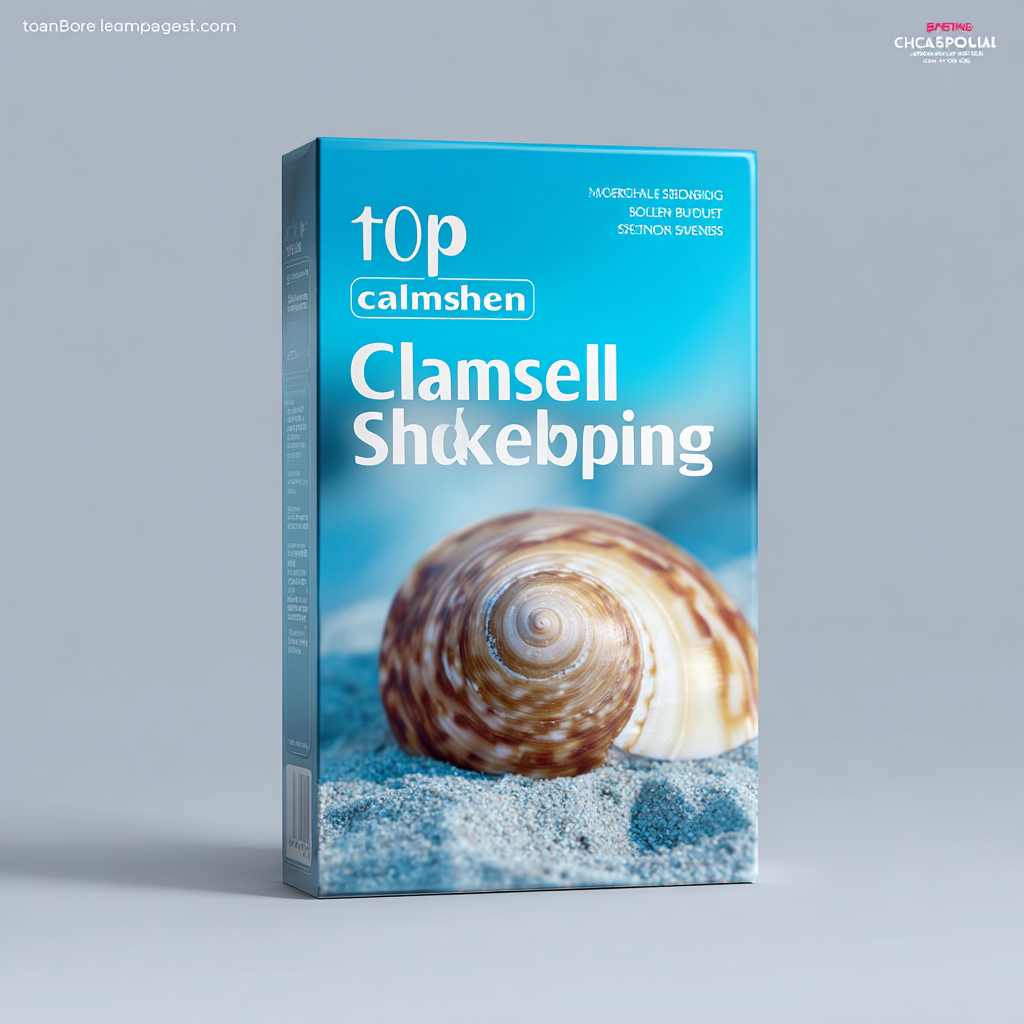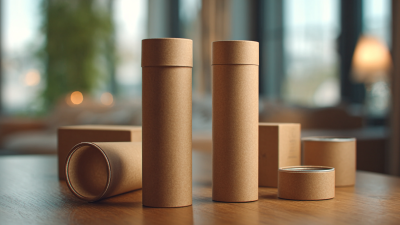In recent years, clamshell packaging has emerged as a crucial solution for businesses seeking to enhance product visibility, protection, and customer appeal. According to the Packaging Business Outlook 2023 report, the global clamshell packaging market is projected to reach $12 billion by 2025, growing at a compound annual growth rate (CAGR) of 4.5%. This growth is driven by increased demand for eco-friendly and durable packaging solutions across various sectors, including food, electronics, and pharmaceuticals.

Clamshell packaging offers several advantages that cater to modern consumer preferences. Its crystal-clear design not only showcases products effectively but also ensures product safety during transportation and storage. As reported by the Flexible Packaging Association, 70% of consumers make purchasing decisions based on product appearance, reiterating the significance of packaging aesthetics in influencing buyer behavior. Moreover, with rising environmental concerns, manufacturers are innovating in materials to create sustainable clamshell options that appeal to eco-conscious consumers.
Choosing the right clamshell packaging solution is vital for businesses aiming to boost sales and enhance brand image. In this article, we explore the top 10 clamshell packaging solutions tailored to meet diverse business needs, offering insights into how they can transform product presentation and consumer engagement in a competitive marketplace.
In today's competitive market, innovative clamshell designs are revolutionizing product visibility and enhancing brand appeal. As businesses increasingly seek packaging solutions that combine functionality with aesthetic appeal, clamshell packaging stands out for its ability to display products prominently while ensuring protection and durability. The transparent material allows consumers to view the product easily, creating an immediate visual connection that can drive purchasing decisions. With the market for clamshell packaging projected to increase significantly in the coming years, brands are investing in unique designs that not only attract attention but also convey sustainability and modernity.
Sustainable packaging is becoming a crucial factor in consumer choice, with many businesses shifting towards eco-friendly materials that appeal to environmentally conscious shoppers. Clamshell designs are evolving to incorporate recyclable and biodegradable materials, enhancing their marketability. As demand grows—projected to reach nearly $7.64 billion by 2032—the focus on innovative designs continues to correlate with environmental awareness, showcasing products in a way that emphasizes clarity and reduces waste. Brands that effectively leverage these trends in clamshell packaging can significantly enhance their visibility and strengthen their market presence.
 As sustainability becomes a priority for consumers, businesses are increasingly seeking eco-friendly clamshell packaging solutions. Recent reports indicate that over 70% of consumers are willing to pay a premium for sustainable packaging options. This shift in consumer behavior is compelling companies to rethink their packaging strategies, opting for materials such as recycled plastics, plant-based polymers, and biodegradable alternatives. According to the Sustainable Packaging Coalition, the market for sustainable packaging is expected to grow by 5.7% annually, highlighting the urgency for businesses to adapt.
As sustainability becomes a priority for consumers, businesses are increasingly seeking eco-friendly clamshell packaging solutions. Recent reports indicate that over 70% of consumers are willing to pay a premium for sustainable packaging options. This shift in consumer behavior is compelling companies to rethink their packaging strategies, opting for materials such as recycled plastics, plant-based polymers, and biodegradable alternatives. According to the Sustainable Packaging Coalition, the market for sustainable packaging is expected to grow by 5.7% annually, highlighting the urgency for businesses to adapt.
To align with these sustainability trends, businesses can implement a few strategies: first, consider sourcing clamshell packaging made from 100% recycled materials. This not only minimizes environmental impact but also appeals to eco-conscious consumers. Second, explore innovative designs that reduce material use while maintaining structural integrity, which can significantly decrease waste. Lastly, engaging in transparent communication about the sustainability of your packaging can enhance brand loyalty among consumers who value eco-friendly practices.
Incorporating these tips can help businesses not only meet consumer demand for sustainable solutions but also contribute positively to the environment. As more companies transition towards eco-friendly clamshell packaging, staying ahead of these trends can position your brand as a leader in sustainability.
Clamshell packaging has gained significant traction due to its cost-effectiveness, particularly in manufacturing and shipping. According to a report by Smithers Pira, clamshell packaging has seen a robust growth rate, projected to reach $12 billion by 2024. This growth largely stems from its ability to reduce material costs while offering high protection for products. The design allows for efficient use of materials, with manufacturers reporting up to a 30% reduction in packaging waste compared to traditional packaging methods.
Shipping advantages further enhance the appeal of clamshell packaging. The rigid structure of clamshells minimizes product damage during transit, thus reducing return costs related to damaged goods. A study from the Packaging Association indicates that companies using clamshells can save approximately 15% on shipping costs due to their stackable nature, allowing for optimal use of shipping space. Additionally, the lightweight nature of clamshells contributes to lower shipping weights, creating savings in freight costs. In a market where every penny counts, the dual benefits of reduced production waste and favorable shipping logistics make clamshell packaging an invaluable solution for businesses looking to optimize their operations.
In recent years, technological advances in clamshell production have transformed the packaging industry, enhancing both efficiency and sustainability. Manufacturers are now employing innovative techniques that streamline the production process, allowing for faster turnaround times and reduced labor costs. Automation plays a crucial role in these advancements, as automated systems can precisely cut, form, and seal clamshells, minimizing human error and maximizing output.
Moreover, the focus on reducing waste has led to the development of eco-friendly materials and energy-efficient production methods. Many companies are now opting for recyclable or biodegradable plastics to manufacture clamshell packaging, aligning with the growing consumer demand for sustainable practices. Additionally, advanced design techniques enable packaging engineers to create clamshells that use less material without compromising structural integrity, further lowering waste and production costs. As these advancements continue to evolve, businesses can expect to see not only improved packaging solutions but also a significant reduction in their environmental footprint.
As consumer habits continue to evolve, the influence of packaging on purchasing decisions becomes increasingly significant. According to a recent report by Smithers Pira, over 70% of consumers cite packaging as a key factor in their buying decisions, with clamshell packaging particularly favored for its practicality and visibility. This year, the clamshell packaging market is expected to grow by 5.3%, driven primarily by the demand for sustainable packages that enhance product visibility and protection.

In 2025, trends indicate that eco-friendly materials will dominate consumer preferences, with 68% of respondents in a recent packaging study stating they would pay more for products packaged in sustainable solutions. Clamshell packaging manufacturers are responding to this demand by incorporating biodegradable plastics and recyclable materials, ensuring that businesses not only meet consumer expectations but also contribute to environmental efforts. As shoppers increasingly prioritize both functionality and sustainability, clamshell packaging is poised to play a central role in shaping their experiences and influencing their purchasing decisions.





